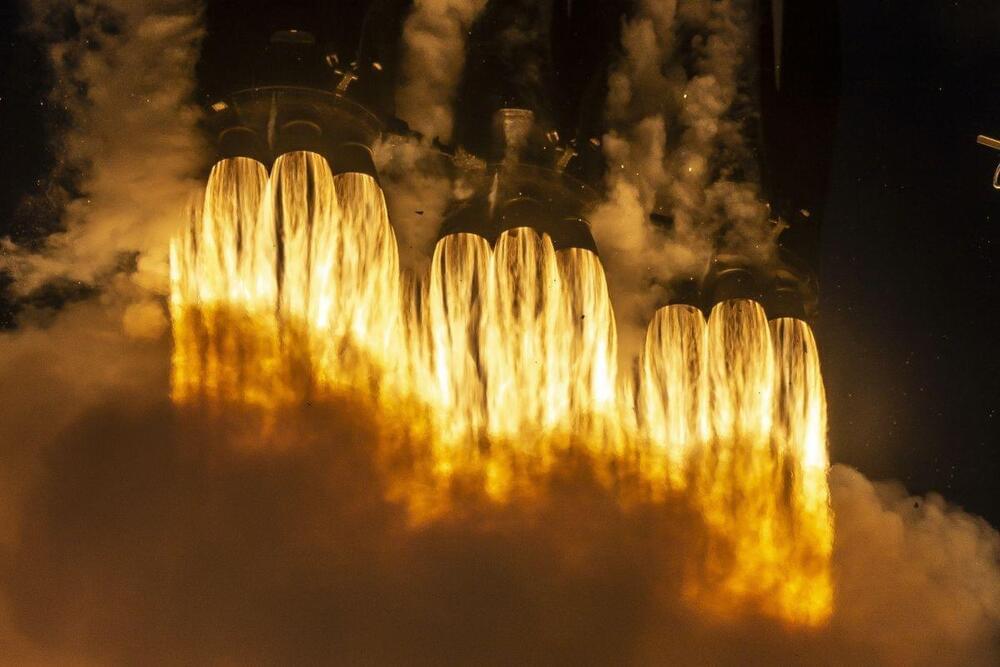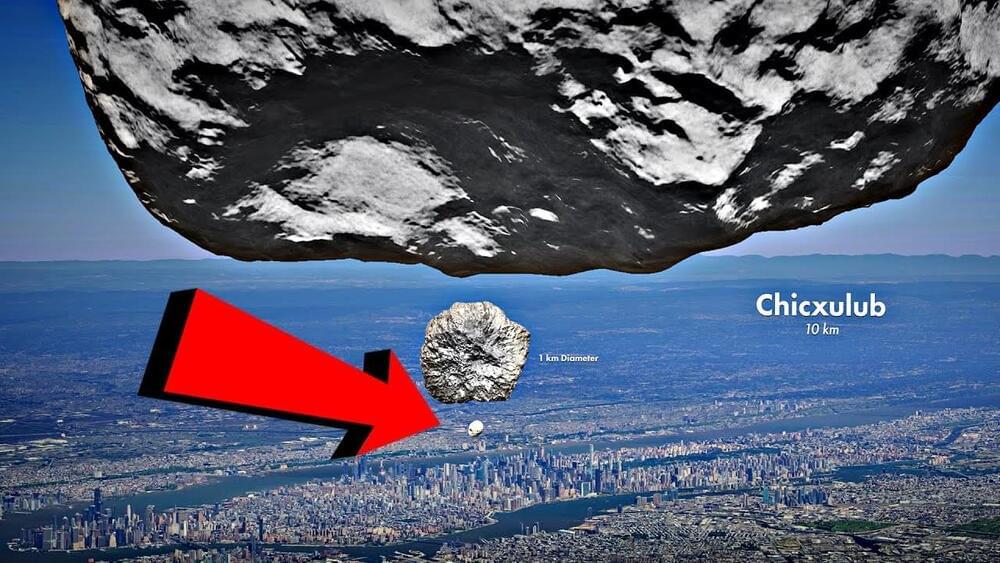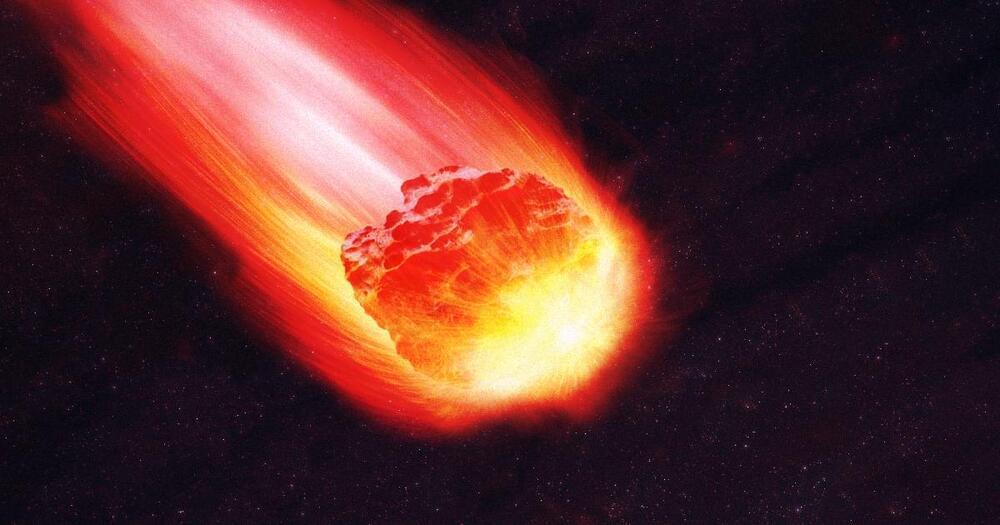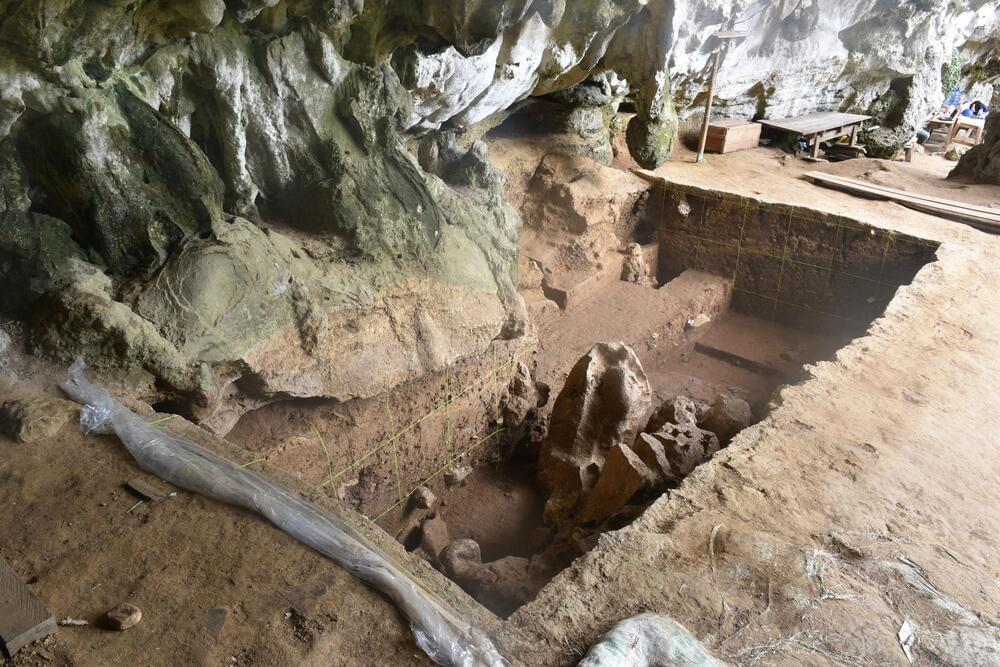Page 6127
Sep 30, 2021
SpaceX Starship is FINALLY Launching INTO ORBIT!
Posted by Claudio Soprano in categories: Elon Musk, space travel

After weeks and days of hardworking, SpaceX is gearing up to launch the Starship into orbit, the biggest test yet for the ship designed to send humans to Mars and beyond. The whole world, including us and you, are waiting for the promised day that will be covered in this video. Huge thanks to all these amazing SpaceX Artists. Please follow them and support them through Payoneer and Twitter.
ErcXSpace: https://bit.ly/3ha4HFe.
Smallstars: https://bit.ly/3heQgja.
IamVisuals: https://bit.ly/35Z3POh.
SpaceXVision: https://bit.ly/3xWTpeb.
DeepSpaceCourier: https://bit.ly/3y0hTmS
C-Bass Productions: https://bit.ly/35Z25F0
HazeGrayArt: https://bit.ly/3hcfgHM
Jochem Laurenssen: https://bit.ly/3vVIJuU
TijnM: https://bit.ly/3x2IWxK
AlexanderSvan: https://bit.ly/3djK9J4
NickHenning3D: https://bit.ly/36bsSy1
EvanKaren: https://bit.ly/3h1gmqV
NasaSpaceFlight: https://bit.ly/2TKU2sL
Kimitalvitie: https://twitter.com/kimitalvitie.
Neopork: https://twitter.com/Neopork85
AlexanderSvan: https://bit.ly/3jmOD3P
RGV Aerial Photography: https://bit.ly/37n1duw.
StarshipGazer: https://twitter.com/StarshipGazer.
Ocean Cam: https://twitter.com/obetraveller.
LabPadre: https://twitter.com/LabPadre.
Spadre: https://twitter.com/SpacePadreIsle.
3Ddaniel: https://twitter.com/3DDaniel1
StarshipBocaChica: The firm is preparing for the Starship’s first orbital flight, which will see the under-development rocket take off from the Starbase facility in Texas and land off the coast of Hawaii. On August 15 CEO Elon Musk declared via Twitter that the ship would be ready for the flight “in a few weeks, pending only regulatory approval.”
Musk first unveiled the predecessor to the ship in 2017 under the name “BFR,” SpaceX designed the fully reusable vessel to send over 100 tons or 100 people into space at a time. It can replace the firm’s existing rockets like the Falcon 9 and Falcon Heavy, while also taking on more ambitious goals like sending humans to Mars and beyond.
The ship uses liquid oxygen and methane as its fuel — meaning that, in theory, astronauts will be able to go to Mars, use the planet’s natural resources to generate more fuel, and use that to return home — or possibly venture out further. The flight will be around 90 minutes. The special thing about this start would be the fact that both stages would be in use – the Super Heavy Booster (BN4) and the Starship (SN20).
The booster would ignite its Raptor engines for two minutes and 49 seconds, come down in the Gulf of Mexico and attempt a landing. Musk confirmed on Twitter that the team has decided the booster will use 33 engines to offer 500,000 pounds of sea-level thrust. These engines will all be the same, except for the outer 20 which will lack some of the more complex controls.
SpaceX is not waiting around to start these missions. The firm is aiming to send the first humans to Mars by the mid-2020s, before establishing a self-sustaining city on Mars as early as 2050.
It could all start with the Starship — and at around 400 feet when paired with the Super Heavy booster that lifts it away from the Earth, this thing is huge. It greatly eclipses the Falcon 9 which measured less than 230 feet tall. It’s also powerful, with a liftoff thrust of 16 million pounds.
SpaceX announced at the launch of the plans that it “intends to collect as much data as possible during the flight to quantify the dynamics of entry and better understand what the spaceship is experiencing during such a flight that is extremely difficult to predict or accurately is to be replicated arithmetically.“
In comparison to the Saturn V, which is a rocket built by NASA; the Starship is taller than the Saturn V. It stands 394 feet (120 meters) tall, weighs 11,000,000 pounds (4,989,516.07 kilograms), and is made of stainless steel alloy.
According to SpaceX, Starship will be the most powerful launch vehicle ever developed and looks like this (SN15 Prototype).
WHAT IS THE PLAN?
In May 2,021 a document from the Federal Communications Commission revealed the plan for the first flight.
The ship will take off from the firm’s Starbase, Texas, launch facility. Around two minutes after liftoff, at 171 seconds, the Super Heavy booster will separate from the Starship. The ship will continue to complete a targeted landing around 60 miles northwest of the coast of Hawaii. The whole flight will last around 90 minutes.
SpaceX will not land the booster or the ship on land. The booster will land in the Gulf of Mexico, around 20 miles offshore, at 495 seconds or eight minutes after launch. The ship will complete a targeted powered landing in the sea.
#spacex #starship #sn20
Sep 30, 2021
The Most significant invention of the 20th Century
Posted by Sean Brazell in categories: media & arts, robotics/AI

Great channel, fascinating video. ☝😁🔜💡💡💡
To get 73% off with the NordVPN 3-year deal plus 4 month free click on the link here: https://nordvpn.com/curiousdroid.
Coupon code: curiousdroid.
What makes a truly world-changing invention? Of all the inventions of the 20th century just one could be said to have changed the world in such a way that it touches virtually everybody on the planet’s lives on a daily basis. It has enabled the most rapid development in technology in history and yet you cant see the vast majority of them directly and their individual job is just to switch on and off. This is the story of the MOSFET and how it changed the world.
Continue reading “The Most significant invention of the 20th Century” »
Sep 30, 2021
EXCLUSIVE PwC offers U.S. employees full-time remote work
Posted by Omuterema Akhahenda in categories: biotech/medical, policy
Accounting and consulting firm PwC told Reuters on Thursday it will allow all its 40,000 U.S. client services employees to work virtually and live anywhere they want in perpetuity, making it one of the biggest employers to embrace permanent remote work.
The policy is a departure from the accounting industry’s rigid attitudes, known for encouraging people to put in late nights at the office. Other major accounting firms, such as Deloitte and KPMG, have also been giving employees more choice to work remotely in the face of the COVID-19 pandemic.
Sep 30, 2021
Elon Musk’s big future: 8 bold predictions he’s made
Posted by Atanas Atanasov in categories: Elon Musk, futurism
Elon Musk spoke with journalist Kara Swisher at the Code Conference on September 27 2021 for a wide-ranging conversation. In typical style, Musk made a number of predictions about the future, many of them having to do with his own portfolio of technology companies.
Sep 30, 2021
$1B longevity fund launches to pursue 120+ lifespan
Posted by Montie Adkins in categories: biotech/medical, life extension, robotics/AI
$100 million a year. All you gotta do is apply for funding.
A consortium of biotech founders, clinicians, and leading longevity research institutions announced today the launch of the Longevity Science Foundation. The new Swiss foundation has committed to distributing more than $1 billion over the next ten years to research, institutions and projects advancing healthy human longevity and extending the healthy human lifespan to more than 120 years.
Longevity. Technology: The Foundation is advised by a aptly-named “Visionary Board” of leading longevity researchers, led by Evelyne Bischof and joined by Andrea B Maier, Eric Verdin, Matt Kaeberlein and Alex Zhavoronkov, all key opinion leaders who be top picks for a longevity dream team.
Continue reading “$1B longevity fund launches to pursue 120+ lifespan” »
Sep 30, 2021
Jawbone discovered in Indonesian cave represents oldest human remains found in Wallacea
Posted by Genevieve Klien in category: biotech/medical
In a cave on the Indonesian island of Sulawesi, an international team of researchers has unearthed a jawbone that represents the oldest human remains ever found in Wallacea. The group has published a paper describing their find on the open-access site PLoS ONE.
Over the past several decades, archaeologists have found evidence of ancient people living in Wallacea, a cluster of Indonesian islands relatively near to Australia. In a cave called Leang Bulu Bettue, they found tools, trinkets and cave art, but little in the way of human remains. In this new effort, the researchers found a jawbone with three molars attached. Dating of ornaments, pigments and portable art surrounding the find suggests the remains were from a modern human living in the area between 16,000 and 25,000 years ago, during the Ice Age. The find could shed light on the people who lived in the area during that time—scientists believe they were ancestors of people who arrived by boat thousands of years before, and the forebears of the first modern people to arrive in Australia.
Study of the jawbone showed that the person, whose gender is still unknown, suffered from a host of oral maladies. The molars were ground down, suggesting the person had used them as a tool for some purpose. And there was evidence of tooth loss, gum disease and cavities. This suggests the person’s diet was carbohydrate-heavy. Additionally, the person was likely older, and had small teeth, suggesting that, like other early island human species, those living on Sulawesi were likely small in stature compared to those living in Europe.
Sep 30, 2021
3D-printed rocket engines: The technology driving the private sector space race
Posted by Genevieve Klien in categories: 3D printing, finance, space travel

https://youtube.com/watch?v=yiUUZxp7bLQ
The volatile nature of space rocket engines means that many early prototypes end up embedded in dirt banks or decorating the tops of any trees that are unfortunate enough to neighbor testing sites. Unintended explosions are in fact so common that rocket scientists have come up with a euphemism for when it happens: rapid unscheduled disassembly, or RUD for short.
Every time a rocket engine blows up, the source of the failure needs to be found so that it can be fixed. A new and improved engine is then designed, manufactured, shipped to the test site and fired, and the cycle begins again — until the only disassembly taking place is of the slow, scheduled kind. Perfecting rocket engines in this way is one of the main sources of developmental delays in what is a rapidly expanding space industry.
Continue reading “3D-printed rocket engines: The technology driving the private sector space race” »
Sep 30, 2021
Did Japan Just Invent How We Will Travel Into Deep Space? | Unveiled
Posted by Sean Brazell in categories: innovation, space travel

Japan may have just changed the future of space technology! Join us… to find out more!
Subscribe for more from Unveiled ► https://wmojo.com/unveiled-subscribe.
Continue reading “Did Japan Just Invent How We Will Travel Into Deep Space? | Unveiled” »
Sep 30, 2021
A huge asteroid almost hit earth but NASA didn’t detect it until a day later
Posted by Quinn Sena in categories: asteroid/comet impacts, existential risks

A giant asteroid almost hit earth on September 16 but because it came from the direction of the sun, scientists missed it.
If you heard a whooshing noise recently, you weren’t imagining it—there was indeed a gigantic asteroid that almost hit earth this month. And NASA didn’t see it coming.
Continue reading “A huge asteroid almost hit earth but NASA didn’t detect it until a day later” »












